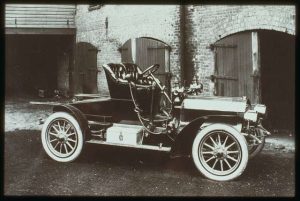
A brief history as to why we give the ‘thumbs up’ sign!

Image credit: Kues/Shutterstock.com
It’s widely accepted that the ‘thumbs up’ gesture originates from the gladiatorial contests of ancient Rome. It was used by spectators to decide the fate of the losing gladiators. However, if you thought the ‘thumbs-up’ sign from the crowd meant that the combatant would be spared then you’d be wrong. In Roman times, thumbs-down, actually signified ‘sword down’. This meant that the crowd thought that the losing gladiator had given a worthy performance and should thus be spared to fight another day.
It was not until 1872, that the ‘thumbs-up’ and ‘thumbs-down’ gestures might represent respective approval and disapproval came to public awareness. This was when Jean-Léon Gérôme’s painting ‘Pollice Verso’ first went on public display. The ‘thumbs-down’ gesture of the crowd in the artist’s popular picture was interpreted in the 19th century as a sign of disapproval. However, the Latin phrase ‘pollice verso’ simply means ‘with a turned thumb’.
It’s widely accepted that Gérôme got the gesture wrong. His painting shows the majority of the crowd giving the ‘thumbs down’ to the blooded triumphant gladiator. It would simply have not been an option at such an event to go against the will of the crowd. Academics before Gérôme also gave support to the theory that ‘thumbs down’ was a gesture that signalled the opponent should be spared.
A More Recent Theory
In more recent times, Gérôme’s mistake in his portrayal of ancient Rome has been greatly perpetuated by Hollywood. No more so than in Ridley Scott’s blockbuster film, Gladiator. However, other schools of thought suggest that the origins of the thumbs-up gesture is actually very much much more recent.
The Oxford English Dictionary (OED) documents that the first positive known use of a “thumbs-up” was in 1917. This was documented in the popular book ‘Over the Top’. It was written by Arthur Guy Empey, an American who served in the British army during the First World War. He wrote in the book about his wartime experiences, describing that the ‘thumps up’ gesture was in common use by his British counterparts. The book states that; “Thumbs up, Tommy’s expression which means ‘everything is fine with me’.”
During the 1930s, the gesture was occasionally mentioned in TIME magazine. The OED also mentions the fact that the “thumbs up” had been gaining in popularity during the Second World War. It’s not entirely clear where the gesture passed over into American culture. However, it’s been speculated that it was used by pilots to communicate with their ground crew in pre-flight checks.
Header image credit: Cookie Studio/Shutterstock.com
If you’ve enjoyed reading this post, why not check out more of the articles in the series by clicking the following link: Why do we…….?





